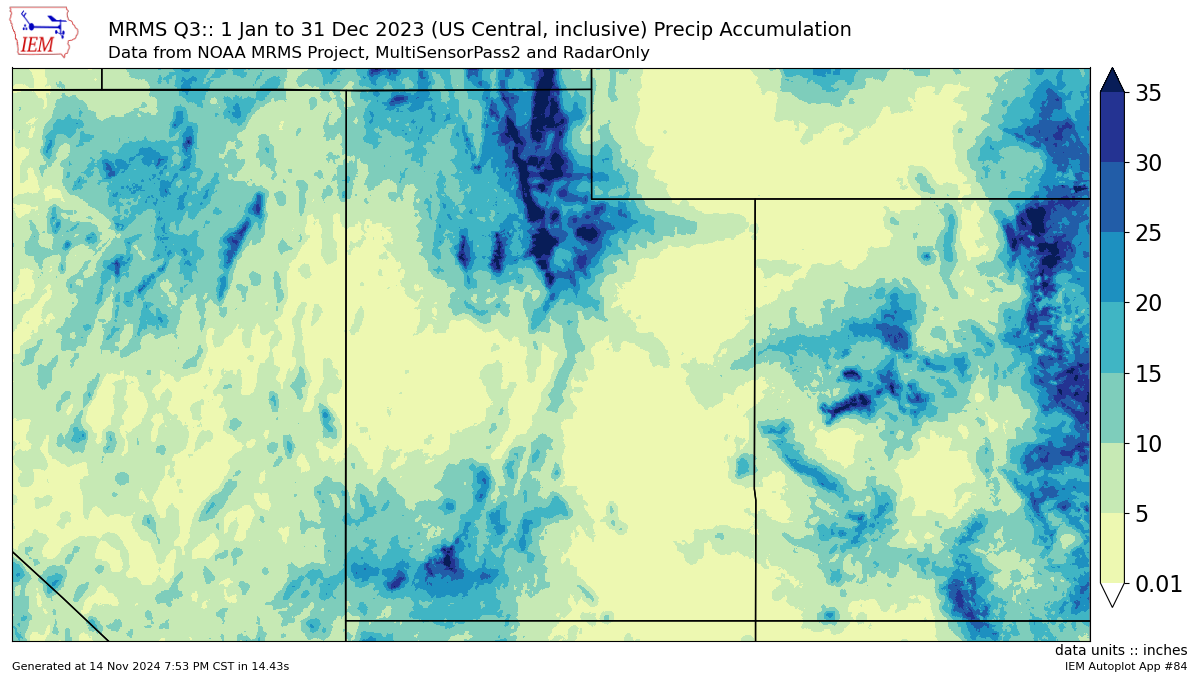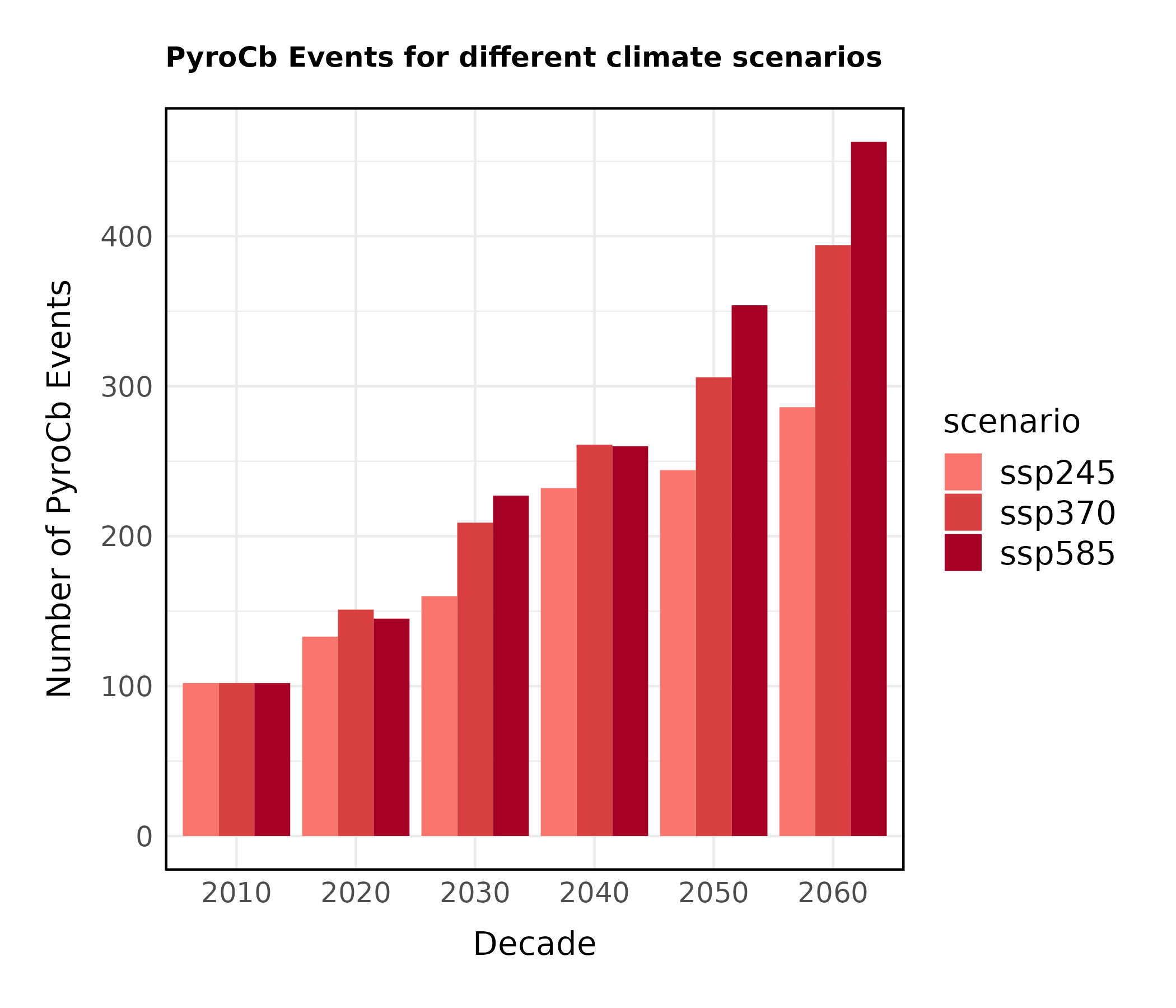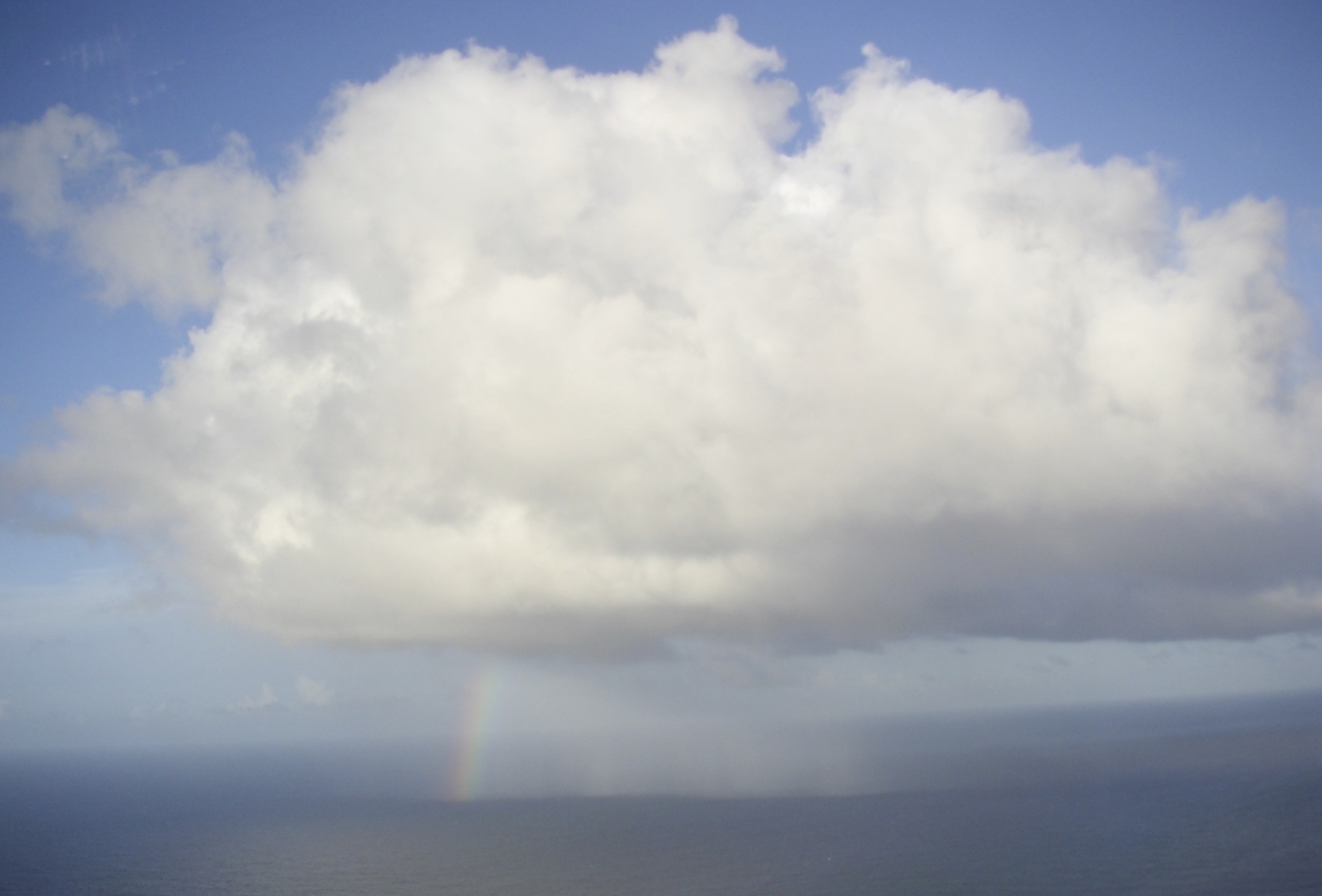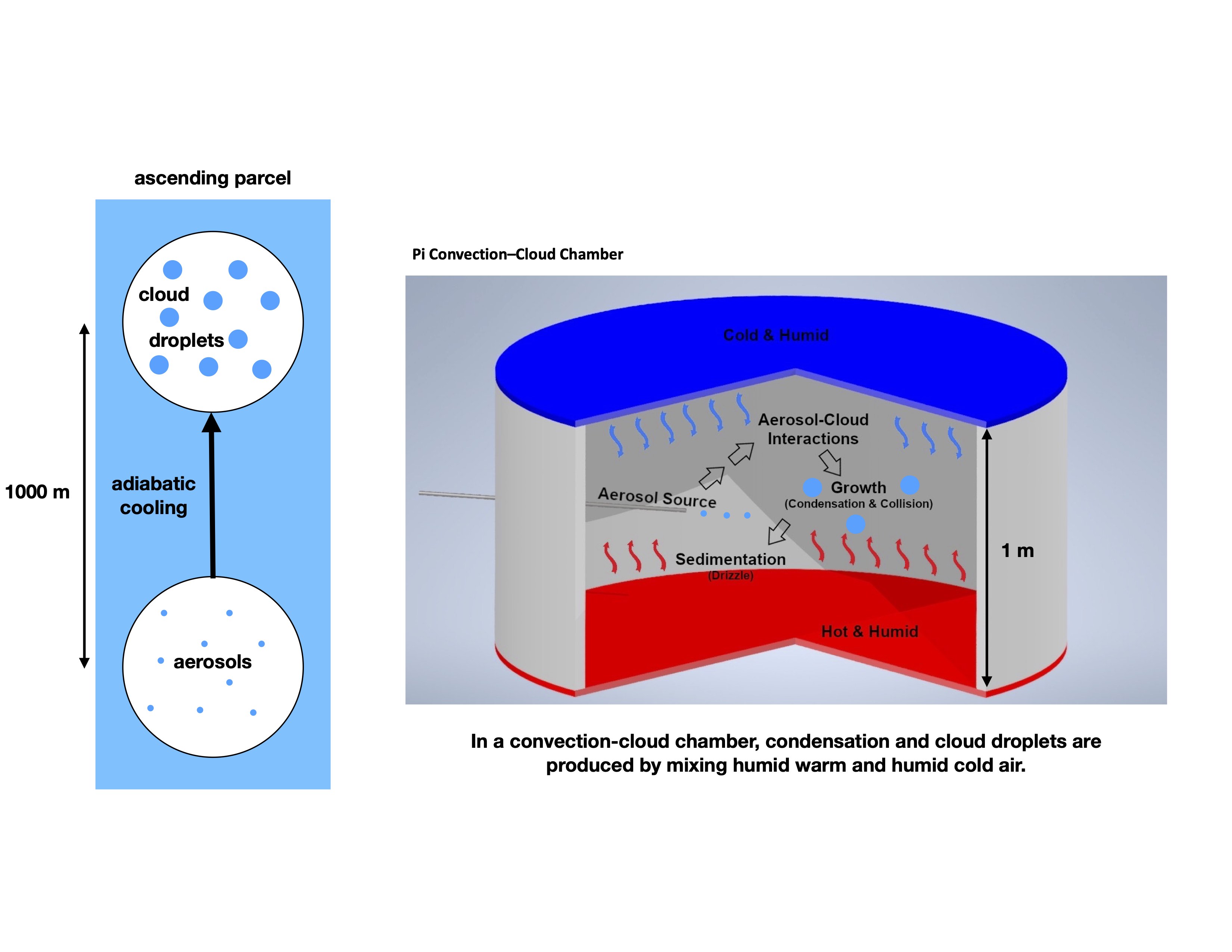RESEARCH EXPERIENCES FOR UNDERGRADUATES (REU)
Department of Atmospheric Sciences
Research Themes
REALM leverages our Department’s strength in alpine atmospheric science and education, provides students with clear links between science and societally-relevant research, and provides opportunities for students to experience mountain environments that they may not have previously had. Dr. Whiteman, who will be the keynote speaker at the opening REALM retreat, is a recipient of the 2012 Research and Leadership award from the AMS Committee on Mountain Meteorology. Dr. Jim Steenburgh, Mentor, was similarly recognized by that AMS committee this year. His popular book, “Secrets of the Greatest Snow on Earth” explains complex science in layman's terms as it explores mountain weather, avalanches and snow safety, historical accounts of weather events and snow conditions, and the basics of climate and weather forecasting.
Measurement, Analysis, and Prediction of Orographic Precipitation
Mountainous regimes are shifting towards precipitation types found in warmer climates such as wet snow and rain. Adequate measurement and modeling capabilities do not currently exist to capture these transitions. Several faculty members are working to improve these capabilities. Dr. Garrett has developed new technology with the invention and commercialization of the Muti-Angle Snowflake Camera (Garrett et al. 2012; Fitch et al. 2021) that will be utilized with REU projects. Dr. Mace has created new techniques to combine satellite and ground-based remote sensing to improve precipitation estimates in mountain regions (Liu and Mace, 2022), and will have REU students analyze remote sensing data. Dr. Steenburgh conducts research on winter storms, especially orographic and lake/sea effect, using data from field campaigns across the globe. These data will continue to form the basis for REU projects. Dr. Strong studies linkages between the atmosphere and cryosphere (e.g. Scalzitti et al. 2016; Bohne et al. 2020), and will guide REU projects focused on the effects of climate change on mountain snowpack.
Fire Weather Applications
Weather has both an influence and is affected by wildfires. Dr. Holmes’s work aims to improve our fundamental understanding of wildfire smoke plume dynamics (Faulstich et al. 2022; Loría-Salazar et al. 2021). Dr. Holmes’s group is developing air quality and exposure modeling to estimate the wildfire smoke exposures and heat stress for epidemiological studies (Chen et al. 2022). Dr. Laguë joined our Department in 2023 as an Assistant Professor. She studies how changes in the land (e.g., wildfire burn scars) can drive changes in the both the local atmosphere, by modulating fluxes of water and energy between the land and the atmosphere (e.g. Boysen et al. 2020). Dr. Horel’s research focuses on improving the information available to wildfire professionals to make decisions when hazardous weather is expected in the vicinity of major wildfires (e.g. Gowan and Horel, 2020; Umunnakwe et al. 2022). Drs. Krueger’s and Mallia’s research groups has been involved in wildfire modeling and field experiments for many years (e.g. Clements et al., 2019; Mallia et al., 2020). All of these projects involve analyzing and visualizing "big data" obtained from numerical weather prediction models and observations (e.g. Gowan et al, 2022), and will allow for exciting REU projects.
Air Quality in Mountainous Regions
Air quality in mountainous regions reflects the combined influences of nearby urban influences, regional-scale emissions, and long-range transport. For instance, atmospheric composition measurements at mountain sites reveal the impacts of aridity on aerosol loading from wildland fires (Hallar et al. 2015; 2017). Mountaintop observations of CO2 reveal the carbon cycle due to montane vegetation, as well as occasional impacts of urban emissions. Dr. Lin’s research has included modeling of CO2 in the mountains (Lin et al. 2017), as well as observations of CO2 and air quality-relevant pollutants from cities up to mountains (Lin et al. 2018). Dr. Jessica Haskins joined our Department as an Assistant Professor in 2023. She has research on halogen chemistry that includes examining the Great Salt Lake (GSL)’s impact on methane emissions. Dr. Kevin Perry’s research is focused on dust plumes from the GSL, which reduce visibility and increase particulate matter to unhealthy levels (Hahnenberger and Perry, 2015). As an example, REALM students will be involved in the analysis and interpretation of GSL soil samples. Dr. Perry was recognized in 2018 by the University of Utah with an award for mentoring students in their career development and exploration.
REALM RESEARCH PROJECTS
Investigating the Sources of Precipitation over Utah by Storm Type
Alyssa Stansfield, Assistant Professor
Scientific Background
Precipitation in Utah comes from a variety of storm types, including strong isolatedthunderstorms in the summer and large midlatitude cyclones in the winter. Additionally,orographic effects enhance precipitation near the many mountain ranges in the state. Thesemountain ranges also block signals from radars, making accurate measurements ofprecipitation over the whole state difficult. To build a comprehensive climatology ofprecipitation sources over Utah, we need to use data from satellites, which collectmeasurements from space and therefore are not blocked by mountains, and high-resolutionatmospheric models. This project aims to quantify how much precipitation over all regionsof Utah comes from different storm types (e.g., midlatitude cyclones, isolatedthunderstorms, large mesoscale convective systems, atmospheric rivers). This informationwill help us understand the year-to-year precipitation variability over Utah and how Utah'sprecipitation is changing over time with climate change.


Student's Role
The student working on this project will analyze precipitation data from the GlobalPrecipitation Measurement Mission (GPM) satellite and high-resolution Weather Researchand Forecasting (WRF) model simulations over the United States that were run by theNational Center for Atmospheric Research (NCAR). The precipitation data will be split up bystorm type, so the student can analyze how much precipitation comes from each storm typeover different regions of Utah. The student will also explore how much precipitation fromeach storm type varies year-to-year and compare results between the GPM observationsand the model simulations.
Student Learning Outcomes and Benefits
- Practice data analysis and plotting in Python
- Work with both observations and model data
- Learn the precipitation patterns and trends in Utah
- Practice presentation and communication skills
Personal exposure to urban particulate matter air pollution and heat in Salt Lake City
Alexandra Ponette-González, Associate Professor
Scientific Background
Cities around the world, including Salt Lake City, are encouraging residents to adoptalternative modes of transportation, such as walking. Walking contributes to reductions intransport-related emissions, with benefits for air quality, and increases physical activityamong city dwellers. Pedestrian exposure to particulate matter (PM) air pollution and heatduring walking trips can, however, offset some of the associated human health benefits.Understanding how co-exposures to particulate matter and heat vary across space in urbanenvironments is therefore important to identify alternative walking routes thatsimultaneously promote walkability and personal health gains.
Student's Role
In this project, we will use low-cost PM2.5 and temperature sensors to assess personalexposure to PM2.5 pollution and heat in Salt Lake City. The REALM REU student will workwith co-mentors Ponette-González and Daher and a small team of student researchersmonitoring personal heat exposure in Salt Lake City. Students will participate in field datacollection by wearing low-cost sensors and walking along designated routes. Students willorganize, conduct preliminary analysis of, and visualize PM2.5 and heat data. Specifically,the student will: (1) learn to correct sensor PM2.5 measurements using correction factorsderived through sensor co-location with reference instruments at nearby regulatorystations; (2) compare low-cost temperature measurements with stationary weather stationtemperature measurements; and (3) relate PM2.5 sensor measurements to temperaturesensor measurements. Using these data, the student will investigate how changes in walkingroute planning can reduce exposures to PM2.5 pollution and heat in urban areas.
Student Learning Outcomes and Benefits
- Gain knowledge and understanding of intraurban variability in air pollution, heat, and personal exposure monitoring.
- Obtain hands-on research experience in field data collection.
- Develop skills to organize and analyze spatial data using GIS, Excel, and R.
- Produce high-quality figures for presentations.
- Refine scientific communication and presentation skills.
Air Quality
Jessica Haskins, Assistant Professor
Scientific Background
Chemical reactions that take place in the atmosphere determine the severity of two of themost challenging modern environmental crises: air pollution and climate change. Salt LakeCity, UT experiences critical air quality issues in both the spring & summer arising from theunique local meteorology and emissions characteristic of the area. Utilizing local air qualitymeasurements and atmospheric chemical modeling, policy relevant insights can be gainedcharting a solution to solving the air quality issues the region faces.




Student’s Role
The student will use data from local monitoring stations that measure gases relevant to airquality and climate, will use simple atmospheric chemistry box models, and output fromglobal atmospheric chemical modeling output data to investigate the role of uniquechemistry & meteorology in driving air quality issues in Salt Lake City. They’ll beencouraged to document their work on GitHub and will be given chances to practicecommunicating their research to non-experts. Ultimately, this project should prepare astudent to find and utilize available data to answer questions about air quality and climatebut will also provide them with a chance to determine if they enjoy doing computationalbased research using applied chemistry and atmospheric science topic on air qualityproblems with societal impacts.
Student Learning Outcomes and Benefits
- Learn to use real world measurements of common atmospheric gases and particlesto predict concentrations of pollutants and how they will change in response to differentconditions.
- Gain relevant quantitative and qualitative research skills including learning to use achemical box model (in python or MATLAB) and to use output from a global chemicaltransport model widely used in atmospheric chemistry disciplines., as well as practicingtheir scientific communication skills.
- Learn to use Git to backup and track their changes to code repositories and develop apublic code “Portfolio” on GitHub.
Wildfires and wind-blown dust
Derek Mallia, Research Assistant Professor
Scientific Background
The student will begin the project by running the GEOS-Chem chemical transport model to produce high time resolution concentration data for a range of chemical species, including the nitrate radical. The results from this model will then be analysed to identify areas and seasons in which daytime NO3 chemistry is most important. The student will also review the literature to compile previous research on daytime NO3 chemistry and identify points of comparison between their model results and findings from previous work. By the end of the project, the student will have a foundational understanding of atmospheric chemical processes and computational based research and will be well placed to build on these skills to pursue research in a range of fields of environmental science.



Student's Role
Evaluating model results from wildfire smoke and dust model simulations and forecastmodels.
Student Learning Outcomes and Benefits
Learn more about how wildfires and dust impact air quality, and how fire-scale processesconnected to larger-scale smoke transport. Students could also have the opportunity tolearn more about the Great Salt Lake and how lake levels impact dust exposure across theIntermountain West.
Microphysics of warm clouds in the atmosphere and in a convection-cloud chamber
Steve Krueger, Professor and Cory Bois, graduate student
Scientific Background
Rain drops start out as much smaller cloud droplets which form on aerosols called cloudcondensation nuclei (CCN). Understanding where and when clouds will produce rain is oneof the most important questions in the atmospheric sciences. Our research project willinvolve studying cloud droplet growth in various scenarios using both modeling and resultsof laboratory experiments done at the Michigan Technological University's convectioncloudchamber. The goal will be to explore the potential application of injecting hygroscopicaerosols into liquid-droplet ("warm") clouds in the laboratory or in the atmosphere tomodify droplet size distributions (DSDs) in order to make the clouds either more or lesslikely to precipitate (form rain drops).




Student's Role
The student will learn about the fundamental physics of droplet growth in warm clouds andhow this process is represented in models. The student will learn about the MichiganTechnological University's convection-cloud chamber: how it operates and the types ofmeasurements that can be made in it. Finally, the student will learn how models are beingused in conjunction with chamber experiments to better understand the effects of varioushyroscopic aerosols (cloud condensation nuclei) on droplet size distributions.
Student Learning Outcomes and Benefits
The student will learn about the fundamental physics of cloud droplet formation and someof the conditions that allow cloud droplets to grow into rain drops. The student will learnabout the measurements made in the Michigan Technological University's convection-cloudchamber, and about how one can calculate the growth of cloud droplets both in thechamber and in the atmosphere using numerical models.
Field Work in Basin, Urban, and Mountainous Terrain
John Horel, Professor, and Colin Johnson, Research Associate
Scientific Background
Our group maintains a network of stations from remote locations on the Great Salt Lake, to urban sites in the Salt Lake Valley, and up through Red Butte Canyon Natural Resource Area into the Wasatch Mountains. We also may be deploying additional sensors in Red Butte Canyon during summer 2025 to help support the Salt Lake City Summer Ozone Study (SLC-SOS). Our group is involved in research and development related to data science, machine learning, fire weather, the Great Salt Lake, flash floods, and air quality along the Wasatch Front (see https://horel.chpc.utah.edu). The REALM student working with us will be involved in a mix of hands-on field work helping to maintain our network of weather stations as well as learning methods to access, archive, quality control, and disseminate observations from a wide variety of sensors.

Student’s Role
You will participate in research with faculty, staff, and graduate and undergraduate students in the Horel group (https://horel.chpc.utah.edu). You will have the opportunity to spend time assisting with fieldwork related to environmental monitoring stations operated by our group. You will obtain hands-on experience with field safety procedures and how weather equipment is installed, maintained, and operated. Background in the atmospheric sciences is not required nor is prior field work or any specialized field training. You should be willing to occasionally hike for a mile or more, often beginning early in the morning to avoid missing out on other REALM-scheduled activities (and avoid heat and bugs!).
Student Learning Outcomes and Benefits
- Obtain hands-on experience involving environmental sensors that requires following common safety procedures.
- Become familiar with software used to access data from dataloggers while in the field and remotely.
- Become familiar with the linux operating system on workstations housed by the Center for High Performance Computing.
- Be involved in societally-relevant research contributing to protecting lives and property from automated weather reports monitoring hazardous weather and improving public awareness of unhealthy air quality.
Role of mountains in monsoonal convective storms
Court Strong, Professor and Zac Cleveland (PhD student)
Scientific Background
The summer monsoon brings much-needed precipitation to the southwestern United States and northern Mexico, but can also create dangerous thunderstorms that bring severe hail, winds, and flooding. The interaction between mountainous terrain and monsoonal precipitation is complex, often challenging weather forecast and water resource management efforts in this region. This research uses high-resolution weather models and data from observational networks to explore how mountains influence convective monsoonal precipitation. By linking atmospheric dynamics to mountain geography, we aim to uncover key processes that govern rainfall distribution in the southwestern US.
Student's Role
The student will contribute to an ongoing investigation of how mountains affect summer monsoon precipitation patterns. Research tasks may include:
- Analyzing monsoonal precipitation using high-resolution model outputs and observational data.
- Mapping precipitation patterns and identifying trends related to mountain geography.
- Running sensitivity experiments in a weather model to test hypotheses about mountain-atmosphere interactions.
- Collaborating on visualizations and summaries of results for scientific communication.
This role will offer hands-on experience with climate data analysis and modeling tools.

Student Learning Outcomes and Benefits
- Gain expertise in atmospheric modeling and analysis techniques.
- Understand convective precipitation processes and their interaction with mountainous terrain.
- Develop Python skills for handling and visualizing geospatial data.
- Strengthen communication abilities through collaborative research and presentations.
Air Quality Study in Utah
Gannet Hallar, Professor
Scientific Background:
In the Western US, many continue to face poor air quality in the summer due to both high ozone concentrations and increased aerosol loading due to wildfire smoke. Both increased ozone and aerosol concentrations have been linked to increased instances of respiratory illness.
Student’s Role, and Student Learning Outcomes and Benefits:
The REU student will work closely with the Hallar Aerosol Research Team (HART) to investigate aerosol loading associated with wildfire smoke in Utah. There are two objectives for this summer project.
- The student will be engaged in the Salt Lake City Summer Ozone Study (SLC-SOS) with a focus on preparing air quality forecast for logistical field planning. The SLC-SOS is a collaboration between University of Wyoming, Utah Division of Air Quality, the University of Utah and Colorado State University (along with many others). The student’s learning outcome will focus on: gaining experience in airborne research (U. of Wyoming King Air) to study air quality in an intermountain basin. This campaign will enable undergraduate students to examine profiles of wind, temperature, aerosol properties, and carbon dioxide (CO2) in the boundary layer in the Salt Lake Valley. The overall goals of SLC-SOS are to use airborne measurements to investigate O3 production along the Wasatch Front between July and August 2025.
- Next, the student will be engaged with a team focused on understanding the health impacts due to wildfire smoke exposure on days that are classified as exceptional events by the Environmental Protection Agency. Here the REU student will use and improve data analysis skills (e.g. R or Python), while involved in societally relevant research.
2021 - 2024 REALM Research Experience for Undergraduates
|
|
REALM Mentee |
Institution |
REU Mentor(s) |
Poster Title |
|
2021 REALM REU COHORT
|
Luke Rosamond |
U. of North Carolina, Charlotte |
T. Garrett E. Pardyjak |
Understanding the Effects of Turbulence on Falling Snowflakes |
|
Linda Arteburn |
State University of New York |
J. Lin D. Mallia |
Impact of Population Trends in Relation to CO2 in Cache Valley |
|
|
James Mineau |
University of Wisconsin |
J. Lin D. Mallia |
||
|
Ashley Evans |
University of Northern Colorado |
Tim Garrett |
||
|
Loren Brink |
Stony Brook University |
Steve Kruger Matt Moody |
Wildfires: Rate of Spread Through the Lens of Models and Simulations |
|
|
Ashlynn Searer |
Sesquehanna University |
J. Horel A. Jacques |
||
|
Nadine Gabriel |
Youngstown State University |
J. Horel A. Jacques |
Analyzing Forecasts of Ozone Near the Great Salt Lake, Summer 2021. |
|
|
Valerie Vaca |
California State U. Northridge |
G. Hallar |
||
|
Ramy Yousef |
Hendrix College |
E. Pardyjak J. Stoll |
||
|
Elizabeth Sterner |
Arizona State University |
J. Mace S. Benson |
||
|
Makenzie White |
Utah Technical University |
J. Mace S. Benson |
Cloud and Precipitation Property Sensitivity to Volcanic Aerosols |
|
|
Adjete Tekoe |
Western Kentucky University |
J. Steenburgh
|
Climatology of Snow to Liquid Ratio in Central Wasatch Mts. of N. Utah |
|
|
Niwde Rivera |
Universidad de Puerto Rico |
S. Hoch
|
||
|
2022 REALM REU COHORT
|
Alejandra Garcia |
Florida State University |
J. Horel A. Jacques |
Case Study of Variation in Ozone in The Farmington Bay Region |
|
Derk Lyford |
St. Olaf College |
S. Krueger Matt Moody H. Holmes |
||
|
Francisco Reyes |
Amherst College |
K. Perry
|
Analyzing Dust Particle Size Ratios Versus Soil Moisture & Wind Shear |
|
|
Cambria White |
North Carolina Central University |
D. Mallia J. Lin |
Identifying Sources of Methane Leaks in the Bountiful/North Salt Lake Area |
|
|
Pamela Cubias |
State U. of New York at Albany |
P. Veals |
||
|
Sam Jurado |
Cornell University |
J. Horel
A. Jacques
|
||
|
Silvia Lombardo |
Indiana University Bloomington |
J. Steenburgh
|
Verification and Bias Correction of GFS Precipitation Forecasts |
|
|
Sophia Wynn |
U. of California San Diego |
S. Cooper |
Snowfall Measurement Uncertainties Over Mt. Terrain |
|
|
2023 REALM REU COHORT
|
Jordin Hubbard
|
U. of N. Carolina Charlotte |
J. Steenburgh |
Validation of Machine-Learning-Based Snowfall Forecasts for Snoqualmie Pass, WA |
|
Simon Thomas
|
Bowdoin College |
S. Krueger
Matt Moody
|
Modeling Wildfire Plumes in Crosswinds with the QES-Fire and SAM Atmospheric Models |
|
|
Frank Vazzano
|
U. of Colorado at Colorado Springs |
P. Veals |
Trends in Western US snowpack as observed by snow courses and the SNOTEL network |
|
|
Tyler Meyers
|
Oregon State University |
J. Horel |
Examining Ozone Concentrations Across the Wildland Urban Interface in Summer of 2023 |
|
|
Sylvie Shaya
|
Wellesley College |
J. Haskins |
Understanding the Impact of Halogens on Tropospheric Ozone Concentrations in Salt Lake City |
|
|
2024 REALM REU COHORT
|
Andre Bergeron |
Clark University |
Marysa Lague |
|
|
Joseph Abi-Karam |
University of Illinois, Urbana-Champaign |
John Lin
Haley Humble
|
||
|
Auston McDonald |
Nevada State University |
John Horel |
||
|
Anna James |
University of Nebraska, Lincoln |
Savanna Wolvin
Court Strong
|
||
|
Justin Hassel |
The Pennsylvania State University |
Gannet Hallar
|
||
|
Klara Kjome Fischer |
Carleton College |
Heather Holmes |
||
|
Nathan Harms |
University of North Carolina at Charlotte |
Tim Garrett
Eric Pardyjak
|
||
|
Paige DeFronzo |
Bryn Mawr College |
Alfred Mayhew
Jessica Haskins
|
